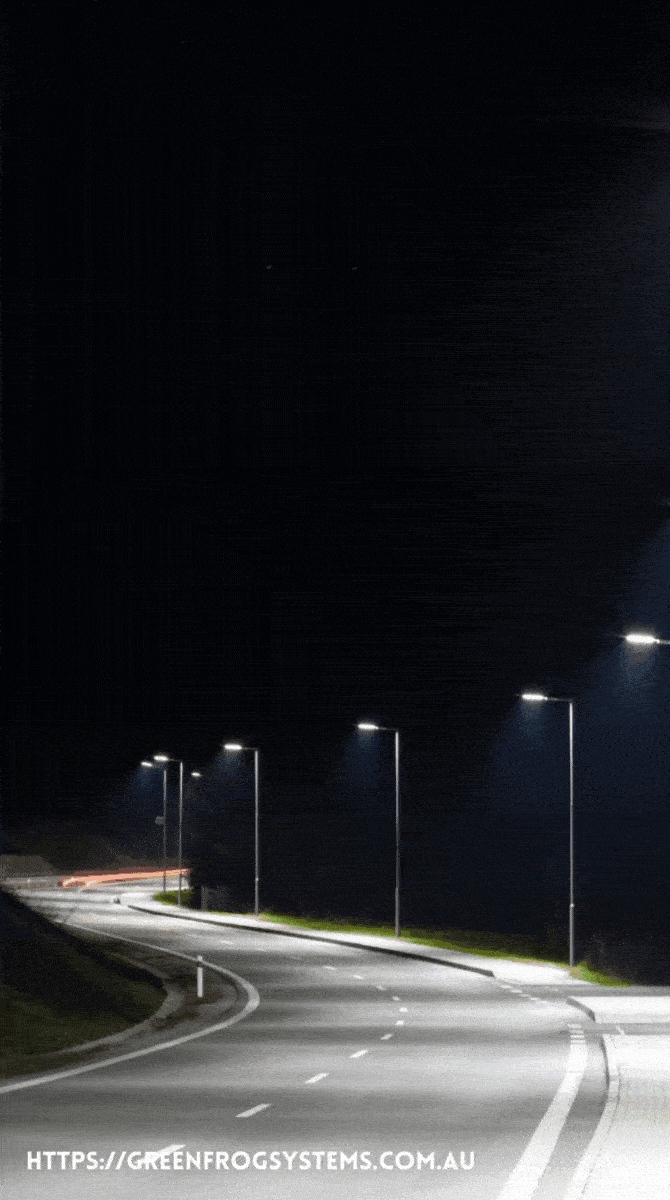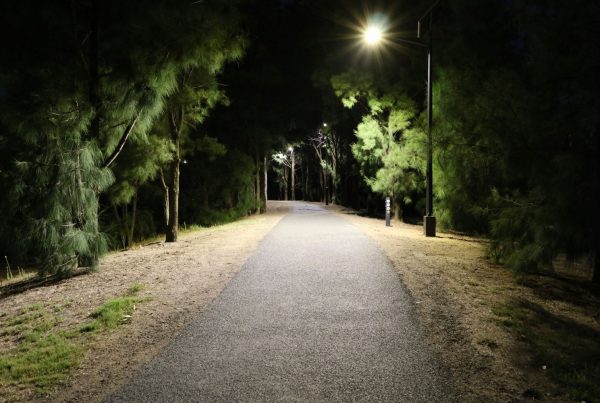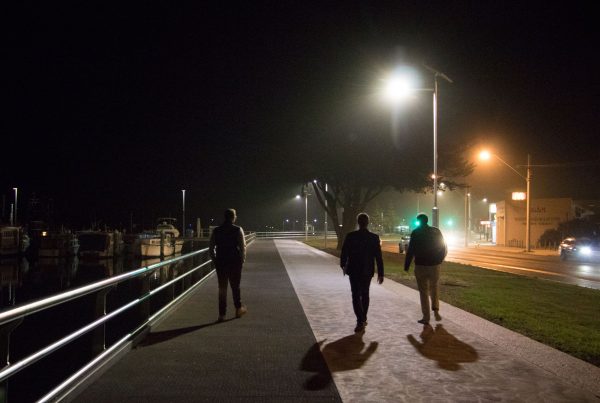How to Choose the Right Solar Lights for Your Public Spaces
Solar lights stand out as an optimal solution for sustainable and efficient lighting in public spaces. They not only offer environmental advantages but also significantly improve safety and security. Drawing on the expertise of Green Frog Systems, industry leaders in solar lighting, and insights from the Lighting Council of Australia’s commercial solar lighting guide, this article aims to provide a clear and comprehensive guide to selecting the right solar lights for your public spaces.

When selecting solar lights for public spaces, it’s crucial to understand the technical aspects that ensure their effectiveness and reliability. According to the Commercial Solar Lighting Guide by the Lighting Council, several key factors must be considered:
- Lighting Standards and Specifications: Solar lighting installations should meet specific illumination requirements defined by technical standards, such as AS/NZS 1158 for roads and public spaces. These standards categorize lighting based on the visual needs of motorists (‘Category V’) and pedestrians (‘Category P’). Ensure that your chosen solar lights comply with these standards to provide adequate illumination for the intended environment.
- Solar Panels: The efficiency of solar lights heavily depends on the photovoltaic panels that capture solar energy. The orientation and tilt of these panels should be optimized based on the path of the sun, especially during periods of lowest solar insolation (the amount of solar energy received per unit area). In the southern hemisphere, for instance, panels should generally face north for maximum energy capture. The panel’s angle and positioning are critical for optimal performance throughout the year.
- Batteries and Charge Controllers: The choice of batteries and their charge controllers is vital. Charge controllers, like MPPT (Maximum Power Point Tracking) or PWM (Pulse Width Modulation), regulate the energy supply between the panels and batteries. MPPT controllers are more efficient and commonly used in commercial applications. The battery’s capacity should be sufficient to provide illumination for at least three nights without recharge, considering factors like depth of discharge (usable capacity before damage), cycle life (number of recharge cycles), and autonomy period (operation days without additional energy input).
- Sizing and Compliance: Ensure that all components of the solar lighting system are suitably sized to meet the specified requirements. This includes considering the power consumption, battery requirements, and solar panel sizing. A well-designed system should also include a margin of safety and account for the lowest expected solar insolation.
By understanding and applying these technical considerations, you can choose solar lighting solutions that are not only environmentally friendly but also reliable, efficient, and compliant with industry standards. This ensures that public spaces are illuminated effectively, enhancing safety and usability for all.

Understanding the Importance of Solar Lighting in Public Spaces
Solar lighting is redefining the safety and aesthetics of public spaces. Studies, including one conducted in New York City, have shown that well-lit areas can reduce night-time crime by up to 39%. This is because adequate lighting improves surveillance and deters criminal activities, thereby fostering a sense of safety within the community.
RELATED POST : How Solar Lights are Redefining the Safety of Public Spaces
Key Factors to Consider When Choosing Solar Powered Lighting
- Purpose and Location: Determine the primary function of the lighting. Is it for pathways, streets, parks, or shelters? The location will influence the type of solar light you need.
- Lighting Intensity and Coverage: Consider the level of brightness required and the area that needs to be covered. Different spaces may require varying levels of illumination.
- Durability and Weather Resistance: Ensure the lights are durable and can withstand local weather conditions. This is crucial for long-term performance and minimal maintenance.
- Battery Life and Solar Panel Efficiency: Check the battery life and the efficiency of the solar panels. Higher efficiency means better performance, especially in areas with less sunlight.
- Aesthetic Appeal: The design of the solar lights should complement the environment. Aesthetically pleasing designs can enhance the overall look of the space.
- Cost and Installation: Consider the cost, not just the upfront expense but also long-term maintenance costs. Also, assess the ease of installation.

Recommended Products For Public Spaces – Based on Application
- For Pathways: The Defender and Stealth models are excellent for pathway lighting, offering a blend of aesthetic appeal and efficient illumination.
- Street Lighting: The Aeromax Pro and GFS-200 are ideal for street lighting, providing robust performance and extensive coverage.
- Shelter Lighting: The GFS-50-MSL is perfect for shelters, offering focused lighting with exceptional durability.
- Energy Storage Solutions: For areas requiring extended lighting, consider the Aeromax Dual and GFS-400-ESS, which come with efficient energy storage options.
Conclusion
Choosing the right solar lights for public spaces is a balance between functionality, aesthetics, cost, and environmental impact. By considering these factors and exploring the recommended products from Green Frog Systems, you can ensure that your public spaces are not only well-lit but also safe, sustainable, and visually appealing.
REFERENCE: The Lighting Council of Australia Commercial Solar Lighting Guide is Available Here







